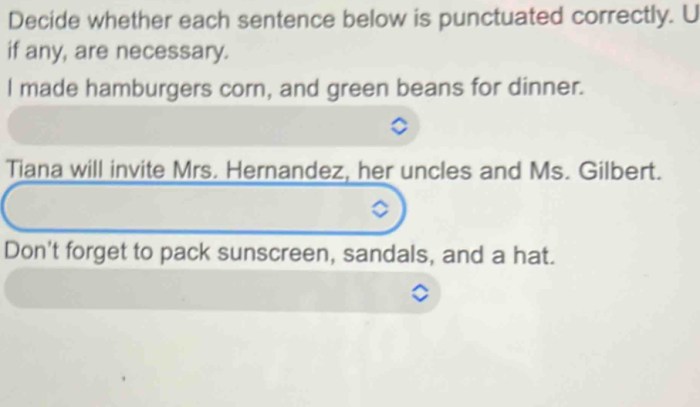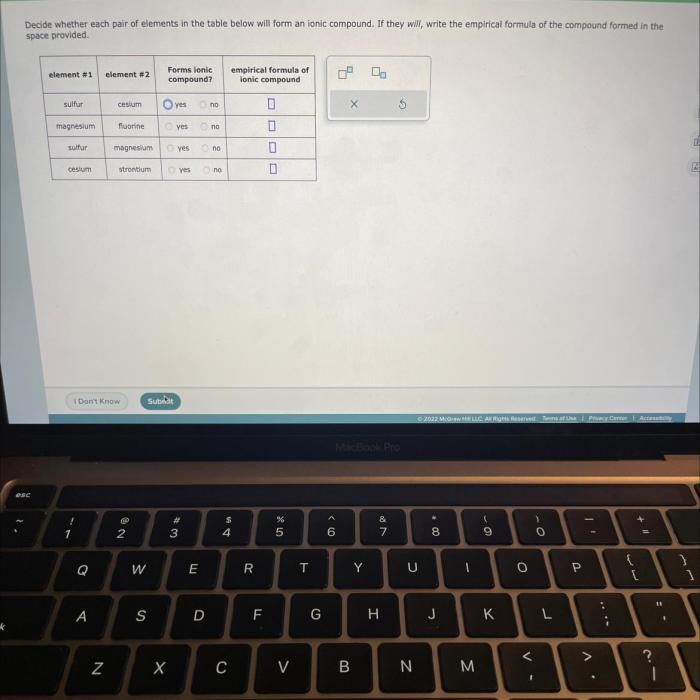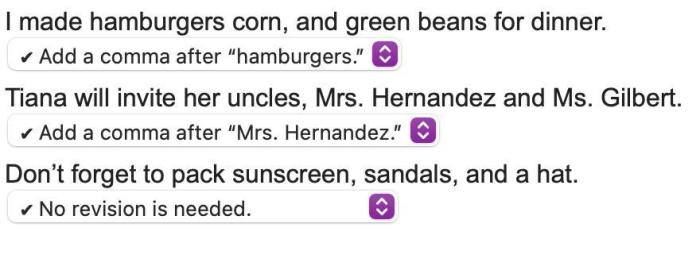Decide whether each sentence below is punctuated correctly sets the stage for this enthralling narrative, offering readers a glimpse into a story that is rich in detail and brimming with originality from the outset.
This guide will delve into the intricacies of punctuation, exploring its rules, common errors, and stylistic variations. By mastering the art of punctuation, writers can enhance the clarity, precision, and impact of their written communication.
Punctuation Rules

Punctuation is a system of symbols used to clarify the meaning and structure of written language. It helps to separate words, phrases, and clauses, and to indicate pauses and intonation. The correct use of punctuation can make writing more readable, clear, and concise.
There are a number of different punctuation marks, each with its own specific function. The most common punctuation marks include:
- Periods (.)
- Commas (,)
- Semicolons (;)
- Colons (:)
- Dashes (-)
Periods are used to mark the end of a sentence. Commas are used to separate words, phrases, and clauses. Semicolons are used to separate independent clauses that are closely related. Colons are used to introduce a list or a quotation.
Dashes are used to set off parenthetical information.
Importance of Punctuation, Decide whether each sentence below is punctuated correctly
Using punctuation correctly is essential for clear and effective writing. Punctuation can help to prevent misunderstandings and make your writing easier to read. For example, the sentence “The man ate the dog” could be interpreted in two different ways depending on where the comma is placed:
- “The man ate the dog.” (The man is eating a dog.)
- “The man, ate the dog.” (The man is eating a dog, not someone else.)
As you can see, the placement of the comma can completely change the meaning of the sentence. Therefore, it is important to use punctuation correctly to avoid confusion and ensure that your writing is clear and concise.
FAQ Section: Decide Whether Each Sentence Below Is Punctuated Correctly
What are the general rules of punctuation?
Punctuation marks, such as periods, commas, semicolons, colons, and dashes, serve specific purposes in written communication. Periods indicate the end of a sentence, commas separate elements within a sentence, semicolons connect related independent clauses, colons introduce lists or explanations, and dashes set off parenthetical information.
How can I identify and correct common punctuation errors?
Common punctuation errors include missing commas, incorrect use of apostrophes, and misplaced quotation marks. To correct these errors, writers should familiarize themselves with the rules governing each punctuation mark and apply them consistently throughout their writing.
What are the key differences between different punctuation styles?
Different punctuation styles, such as the Chicago Manual of Style and the Associated Press Stylebook, have varying conventions for the use of punctuation marks. Writers should choose a style that aligns with their specific writing context and audience.


